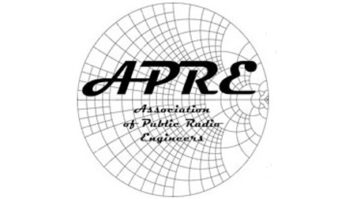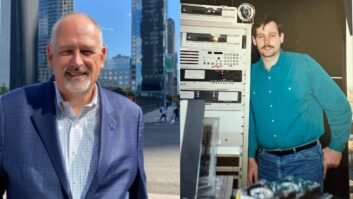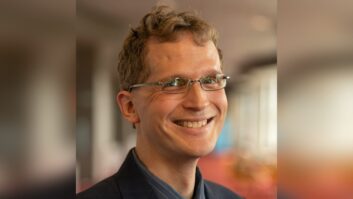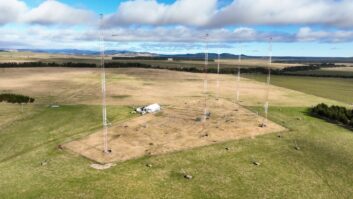The original of this story stated incorrectly that Dalke was the first person to receive this award twice. He is the third, after Leonard Charles and Clay Freinwald.
Jim Dalke is an award winner twice over.
Since its inception in 1991, the Robert W. Flanders SBE Engineer of the Year award is presented each year to a member of the Society of Broadcast Engineers who has excelled in their career while furthering the mission of the organization. Dalke received it first in 2014 and again this year. He was honored during the recent annual SBE National Meeting, in Madison, Wis.
“I am truly still doing today what I dreamed about as a kid, and I’m still enjoying it 100 percent. I’ve been so blessed,” he told Radio World.
Dalke, a member of SBE Chapter 16 in Seattle, holds CPBE, 8-VSB, AMD and CBNT certifications. He operates Dalke Broadcast Services which, according to the SBE announcement, stands out for an unwavering focus on the special needs of minority radio and TV broadcasters in the Seattle area, a testament to his commitment to inclusivity and diversity.
He and his wife Betty reside in Federal Way, Wash. The veteran engineer is 85 and has faced recent health challenges. Last fall he had to call on fellow engineers to cover his duties after he contracted a bacterial-resistant E coli infection and was hospitalized for several weeks. He has since been diagnosed with Stage 3 prostate cancer and is seeking out treatment options.
Nevertheless, Dalke says he stays busy. He is active with the Alternative Broadcast Inspection Program through the Washington State Association of Broadcasters. He also serves as editor of the SBE chapter’s award-winning online publication The Waveguide.
“I also still take care of three AM stations in the Seattle market. I do their NSRC spectrum measurements. All three are owned by minority groups who have had trouble keeping engineers on board, partly due to the language barrier. But they need the help even though they can’t afford to pay a lot.”
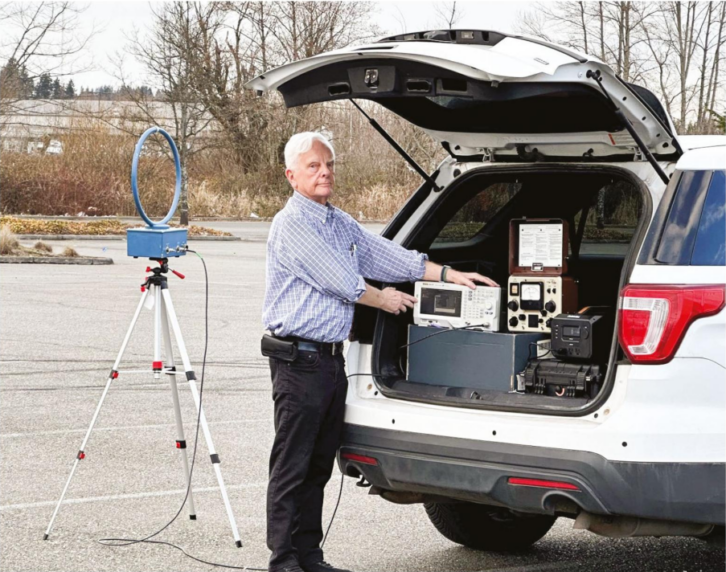
Beginnings
Dalke has spent decades in radio and television broadcast and communications technologies in equipment development, construction and maintenance. He holds nine patents for innovations in broadcast and communications technologies.
“I was always into science as a kid. I read everything I could growing up in the small town of Dallas, Ore.,” he said.
“At the age of 14, I got my novice ham license, so radio has always been a part of my life. I was amazed with talking into a microphone and having it transmit a half a world away. That has always fascinated me.”
He began school at Oregon State University and volunteered at its radio and television stations. Then between his freshman and sophomore years at college he worked as a lookout during the summer in the Cascade Mountains.
“I had lots of time to read, so I took my FCC Q&A manual with me, and then went to Portland to the FCC office with the goal of getting my Second Class Radio Telephone license. I whizzed through that so fast the gal in the office said I might as well try for my First Class. I passed that with flying colors, too.
“That was my ticket into broadcasting.”
It was 1959. Directional AM radio stations of 10 kW or more were required to have a chief operator on duty at all times. This helped him secure work in Idaho, first in Payette and subsequently in Boise. “I was also on air there for several years before deciding I had to get serious about broadcast engineering.”
In the years following Dalke worked in radio and TV in Eugene and then Seattle, eventually being hired by King Broadcasting in the Emerald City in 1965. Dalke helped them transition from black-and-white television to color.
“I figured it would give me a lot of experience, and it did. They did a lot of their own construction. They built a lot of their own racks and built a lot of equipment.”
King Broadcasting also owned FM and AM stations in the city. “Seattle is a unique radio market, with its geography and location. It’s also an innovative broadcast market. Many of the AM stations have facilities on Vashon Island. I believe there are eight AMs and that seven of them are 50 kW stations,” he said.
Vashon Island is in the Puget Sound between Seattle and Tacoma, surrounded by salt water — well suited for hosting AM transmission facilities.

Dalke left King Broadcasting in 1970 to start his business and work with one of the first cable television systems in the United States. Seattle TV stations were eager to roll out cable TV at the time because of “signal shadowing” that caused TV reception problems in the market.
The opportunity was a good chance for Dalke to develop some innovative technology.
“The cable systems had 30+ channels of bandwidth, but that was before satellite, so all they could provide were a dozen local channels. I built a multi-channel digital character generator so we could put text weather on one channel and news headlines and sports on other channels to fill out the cable lineup,” he said.
Dalke ended up helping cable systems in other major markets, including New York, Chicago and Los Angeles, to install multi-channel digital character generators, for which he received patents.
Later, he developed a digital weather display to enhance the National Weather Service radar for TV weathercasters, including an artificial color system.
“I built a solid-state imaging version to capture that weather radar signal and allow stations to put it on the air. A lot of major TV stations purchased that system. Longtime ABC-TV meteorologist John Coleman from ‘Good Morning America’ even used my system.”
He has authored numerous technical papers and given many presentations for broadcast engineers. Just in recent years he has given talks at NAB Shows about modernizing NRSC AM proofs; protecting your station license; and co-locating AM transmitter facilities with cellular monopole towers.
Keeping a station afloat
He joined Salem Broadcasting to manage the technical operations of their stations in Seattle. In the early 2000s, Dalke began perhaps his most exciting broadcast engineering project.
The story begins with KKOL(AM) and its transmission facility on Harbor Island not far from downtown Seattle.
“The Port of Seattle wanted to turn Habor Island into a container ship facility, so they purchased the transmitter site property. That meant Salem had to find a place to prop up a temporary AM antenna. That’s when we moved to the cargo ship.”

KKOL operated from the “Coastal Ranger,” a moored 175-foot vessel in Seattle’s Elliott Bay, for almost five years beginning in 2002. Dalke designed the temporary, 1,000-watt floating broadcast station using a Valcom fiberglass antenna.
“I remember the FCC questioning the STA we submitted. ‘You wanna do what?’ they asked. Well, it put out an incredible signal.”
Dalke still believes in AM radio despite the crisis facing the band including the threat from automakers to eliminate it from the dash.
He owned an AM station until recently. Dalke purchased the license for KARR(AM) in Kirkland, Wash., in 2014. The previous owners let it go silent and sold the property where the antenna array had been.
He restored the station to 250 watts and operated it for a decade before surrendering the license earlier this year. Dalke reached a financial arrangement with a nearby AM licensee to shutter KARR so the adjacent-frequency station could increase power.
Passion for AM
“I still love AM radio. It can be a robust backup system in case of an emergency, but there are many challenges for the service.”
Dalke points to KIRO(AM) in Seattle, which serves as the LP1 for parts of the state of Washington and is a FEMA PEP station.
“I fear someday there will be an emergency and AM radio might be the only survivor, and if you don’t have an AM radio you won’t know what’s happening,” he said.
He worries about putting the audio air chain into the cloud, something more broadcasters are embracing.
“I have a theory. One of the things we need to prepare for in the Pacific Northwest is earthquakes. My fear is the big one hits someday, and the cloud goes down. All that fiber could be cut. When the cloud collapses everyone goes off the air. We need to consider backups.”
The elimination of the main studio rule also has resulted in a lot of unstaffed facilities.
“I am aware of some Seattle broadcasters doing just that. It’s all remote control for this and that. Everything is done from one central location. Makes me wonder how they are serving their local communities.”
Dalke holds Amateur Extra Class License W7PB and is active in the ARRL, the Red Cross and the Washington State Emergency Management Division. He’s also a member of the American Guild of Organists.
“I have just a few things I like to play, but I have built several of my own electronic organs. I’ve always been fascinated by organs. I also enjoy attending pipe organ concerts when I can.”

